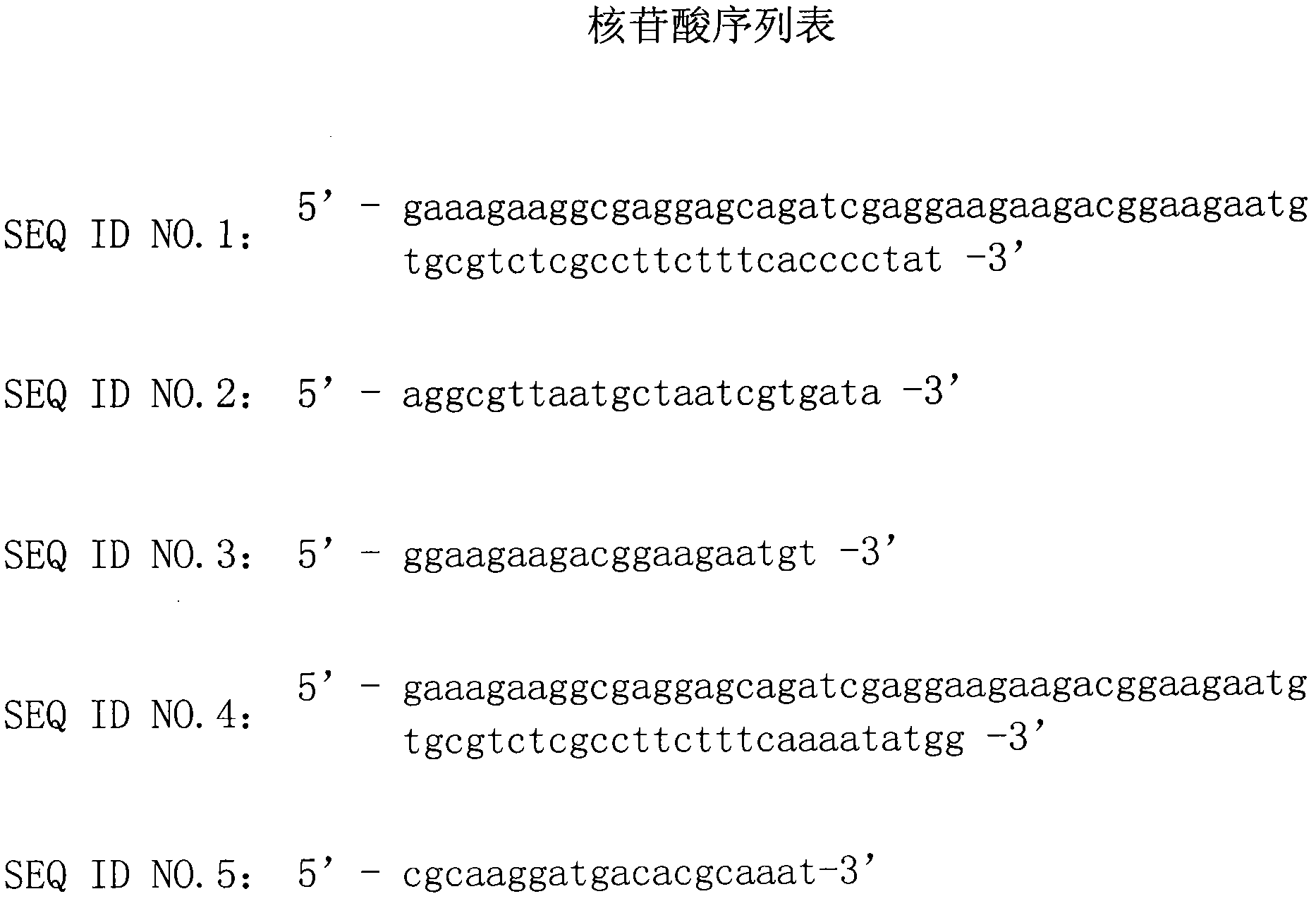Technology for detecting tiny RNA155 (ribonucleic acid 155) relative content of T cells to reflect individual immunity state
A relative quantitative, mir-155 technology, applied in the fluorescent quantitative polymerase chain reaction, molecular biology field, can solve the problems of high throughput, long analysis time, high sample requirements, etc., to shorten the experimental time, reliable detection technology , the effect of reducing economic costs
- Summary
- Abstract
- Description
- Claims
- Application Information
AI Technical Summary
Problems solved by technology
Method used
Image
Examples
Embodiment 1
[0028] First, after wetting the injection syringe with heparin, take about 3ml of venous blood routinely, and turn the syringe to mix the blood evenly. Add whole blood to the culture bottle (5ml of 1640 culture solution containing 20% serum, 5mg of PHA, pH 7.2) in the ultra-clean workbench, add 0.5ml of whole blood (13-15 drops of No. 7 needle), and tightly cover the rubber stopper , shake gently. Place the culture flask in a constant temperature incubator at 37°C for 16 hours. Collect uncultured and cultured blood cells in centrifuge tubes, and centrifuge at 1000rpm for 5min after balancing, remove the supernatant and leave 1ml, and mix thoroughly. Add 25 μL of T cell magnetic beads after mixing and invert repeatedly 2-3 times to disperse the magnetic beads. Gently rotate for 3 minutes at room temperature to allow the beads to attach to the T cells (do not exceed 4 minutes). Mixing can be done using an inversion device or by hand. Place on the magnetic stand for 3 minut...
Embodiment 2
[0030] A reverse transcription operation procedure for detecting miR-155 with this method. 2μL mRNA (0.5pg-1μg) in 20μL system, miR-155, U6 stem-loop primer mixture reagent A 2μL (final concentration 500nM), reverse transcription buffer reagent B 4μL (final concentration dNTP 1mM, M- MuLV reverse transcriptase concentration is 40U, Tris-HCl concentration is 50mM, KCl concentration is 50mM, MgCl 2 Concentration is 4mM), add water 12μL. The reverse transcription program was 5 minutes on ice, 15 minutes at 15°C, 15 minutes at 30°C, and 5 minutes at 95°C. After the reverse transcription is completed, 180 μL of water is added to the test tube to make a 10-fold dilution.
Embodiment 3
[0032] A Q-PCR method for detecting miR-155, as well as an operation process and a reaction program. For each specimen, 2 duplicate tubes for miR-155 detection and 2 duplicate tubes for U6 detection are required, a total of 4 reaction tubes, and the reaction volume of each reaction tube is 10 μL-50 μL. In 10 μL of Q-PCR system, 1 μL of diluted cDNA and 1 μL of specific primers (final concentration 200 nM) were firstly added. Add other reagents after mixing, including 4 μL of universal primer (final concentration 200 nM), 20 μL of Q-PCR buffer (final concentration 300 nM ROX, 0.5×SYBR GreenI dye, 1mM dNTPs, 40mM Tris-HCl, 40mM KCl, 20mM (NH 4 ) 2 SO 4 , 3mM MgSO 4 ), Taq enzyme 0.4 μL (final concentration 0.05U / μL), add water 8 μL. After mixing the reagents, add 8 μL of the mixed reagents to each well, cover the lid and perform detection on the ABI 7500. The procedure for cDNA amplification and quantification is as follows: 3 minutes of pre-denaturation at 95°C; 40-50 cy...
PUM
 Login to View More
Login to View More Abstract
Description
Claims
Application Information
 Login to View More
Login to View More - R&D
- Intellectual Property
- Life Sciences
- Materials
- Tech Scout
- Unparalleled Data Quality
- Higher Quality Content
- 60% Fewer Hallucinations
Browse by: Latest US Patents, China's latest patents, Technical Efficacy Thesaurus, Application Domain, Technology Topic, Popular Technical Reports.
© 2025 PatSnap. All rights reserved.Legal|Privacy policy|Modern Slavery Act Transparency Statement|Sitemap|About US| Contact US: help@patsnap.com


